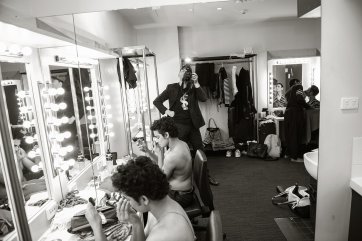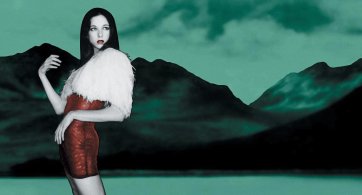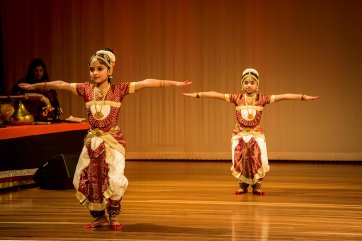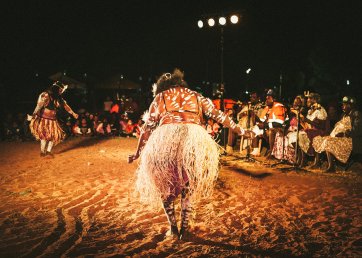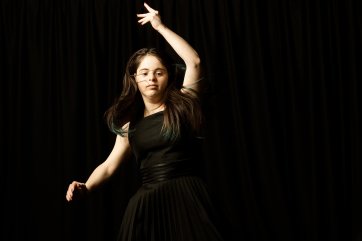Dance experiences aren’t always about grand performances or choreographed routines. They’re often the subtle, intimate moments that leave an indelible mark on us, like pretending to waltz on your dad’s feet or the awkwardness of primary school line dances where you were spun from reluctant partner to partner. Memories of dance are as diverse as we are, each one a reflection of our individual lives. They’re times of connection, expression and freedom that remind us of the inherent beauty of movement.
Stillness in movement
by Tara James, 22 July 2024
Touring throughout regional Australia, Dancer celebrates the joy and accessibility of dance through photographs from the National Portrait Gallery’s collection, displayed as exhibition copies alongside the work of contemporary photographic artists. The show invites audiences to delve into the depths of their personal recollections of dance. During the opening night of Dancer at Geraldton Regional Gallery in Western Australia, I walked through the crowd overhearing snippets of conversations like ‘remember when we used to swing dance?’, ‘have you ever seen a ballerina’s feet?’ and a child exclaiming ‘I call it twirling!’ while spinning on a makeshift dance floor.
Portraying dance through photography has long been a draw not only for historical recollection but as the artistic drive to capture energy and expressiveness, a snapshot of life force. Some of these portraits capture dancers in motion, highlighting the power and beauty of the body on stage or on Country. In others we see a romantic bedroom waltz, friends enjoying a neighbourhood salsa class or a family dancing together in the kitchen. Each explores the body, gesture and movement as a representation of identity and self-expression. Former artistic director of The Australian Ballet David McAllister describes dance as ‘people without words telling complex stories’, while Restless Dance Theatre artist Jianna Georgiou says, ‘When I start dancing on stage, it gives me light and life. As an artist I communicate with others through my body.’
Dance has always been a vital expression of culture and storytelling. For First Nations peoples it is part of an ongoing connection to Country; woven into songs, ceremony and story. Gregory Lorenzutti’s dynamic portrait of Torres Strait Islander dancer Ghenoa Gela, a Koedal and Waumer woman, shows her performing in Winds of Woerr, which she created in collaboration with her mother Annie Gela. ‘What I love most about dance is that it transcends time,’ Gela says. ‘By sharing knowledge and story through dance, we have created a connection to the future.’
Similarly, Wandangula dancer Linda McDinny, who was photographed by Gudanji/Wambaya artist Benjamin Warungu Ellis at the Malandarri Festival in Borroloola, Northern Territory, shared the long history behind her performance. ‘This Ngabaya dance, he been travel all lah way from Western Australia to my Grandmother Country. My Grandfather he was showing that dance for us, he was dancing with them, he was dancing and showing them kids how to dance.’
From the intimacy of dancers preparing backstage to the energetic space of live performance, from bare feet on the earth or a busy city street, the portraits in Dancer foster understanding and connection through the experience of lives lived through dance.
Related information

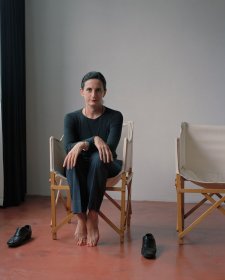


Dancer
Touring exhibition, 2024Open every day
From letting loose in the lounge room to enthralling audiences on stage, this exhibition captures the experience of lives lived through dance.



Portrait 71
Magazine
Ryan Presley about portraiture, Emma Kindred on the career of Joan Ross, Ellie Buttrose looks at Archie Moore’s kith and kin, and Joanna Gilmour steps into the world of Julie Rrap.
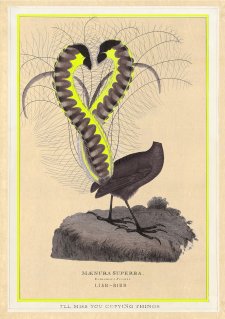
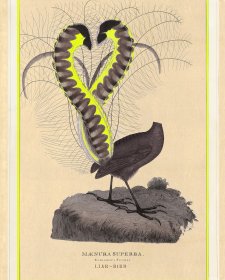
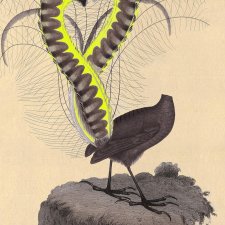
When birds no longer sing
Magazine article by Dr Emma Kindred
Emma Kindred looks at the career of Joan Ross, whose work subverts colonial imagery and its legacy with the clash of fluorescent yellow.



